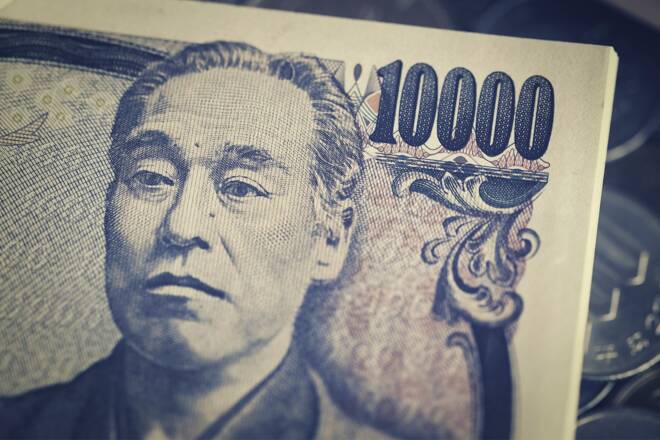Advertisement
Advertisement
Japanese Yen Forecast: USD/JPY Trends Hinge on Retail Sales, BoJ, and Powell’s Outlook
By:
Key Points:
- Weakening retail sales and Tokyo inflation figures may ease investor pressure on the Bank of Japan's Q4 rate decisions.
- Fed Chair Powell's upcoming speech could shift USD/JPY trends, following Friday's US Personal Income and Outlays Report.
- Japan's newly elected PM calls for continued loose monetary policy, signaling potential USD/JPY volatility ahead.
Retail Sales, Inflation, and the Bank of Japan
On Monday, September 30, retail sales figures from Japan could influence buyer appetite for the USD/JPY pair. Will Japan’s Retail Sales Data Spark a Yen Rally?
Economists expect retail sales growth to slow to 2.3% year-on-year in August, down from 2.6% in July.
Softer-than-expected retail sales figures may ease investor expectations of a Q4 2024 Bank of Japan rate cut. Downward trends in consumer spending may dampen inflationary pressures, enabling the BoJ to keep interest rates steady. A less hawkish BoJ could impact Japanese Yen demand, possibly pushing the USD/JPY toward 143.
Notably, softer retail sales would follow Tokyo’s core inflation rate, which declined from 2.4% in August to 2.0% in September.
Other Economic Indicators
Japan’s preliminary industrial production figures may also draw interest. Economists forecast a 0.9% drop in August after a 3.1% increase in July. A larger-than-expected fall may indicate weakening demand, possibly affecting the labor market. A deteriorating labor market may affect wages and spending. A pullback in spending could impact the economy as it contributes over 50% to GDP.
Japan’s New Ruling Party and the BoJ
On Sunday, September 29, Japan’s newly elected Prime Minister, Shigeru Ishiba, advocated for maintaining loose monetary policy conditions, reportedly stating,
“From the government’s standpoint, monetary policy must remain accommodative as a trend given current economic conditions.”
On Friday, the USD/JPY slumped from a morning high of 146.494 on news of Shigeru Ishiba’s win. Before Sunday’s comments, the markets had expected Ishiba to push for monetary policy normalization. A more dovish Prime Minister could affect demand for the Yen, signaling a possible USD/JPY return to 143.
Fed Chair Powell in the Spotlight
Later in the Monday session, Fed Chair Powell is on the calendar to speak. Powell will speak on the US economy at the National Association for Business Economics Annual Meeting (NABE).
Powell’s views on Friday’s Personal Income and Outlays Report could be crucial. However, traders must also consider insights into the economic outlook, and the interest rate trajectory. Support for a 50-basis point November Fed rate cut could send the USD/JPY below 142.
Short-term Forecast for USD/JPY
USD/JPY trends will hinge on retail sales data from Japan and central bank commentary. Softer retail sales figures could reduce demand for the Japanese Yen. However, Fed Chair Powell’s comments could impact the USD/JPY more in a pivotal week for the US dollar. US labor market data could dictate the Fed rate path through Q4 2024.
Stay vigilant as this week’s data will impact your USD/JPY strategies. Monitor real-time data, central bank views, and expert commentary to adjust your trading strategies accordingly. Stay ahead of the market with our expert insights.
USD/JPY Technical Analysis
Daily Chart
The USD/JPY remains below the 50-day and 200-day EMAs, affirming bearish price signals.
A USD/JPY break above the 143.495 resistance level could support a move toward 145. Furthermore, a USD/JPY return to 145 may bring the 145.891 resistance level into play.
Retail sales figures from Japan and central bank commentary require consideration.
Conversely, a drop below 142 could signal a fall toward the 141.032 support level.
The 14-day RSI at 41.40 suggests a USD/JPY drop to the 141.032 support level before entering oversold territory.
About the Author
Bob Masonauthor
With over 28 years of experience in the financial industry, Bob has worked with various global rating agencies and multinational banks. Currently he is covering currencies, commodities, alternative asset classes and global equities, focusing mostly on European and Asian markets.
Did you find this article useful?
Latest news and analysis
Advertisement
